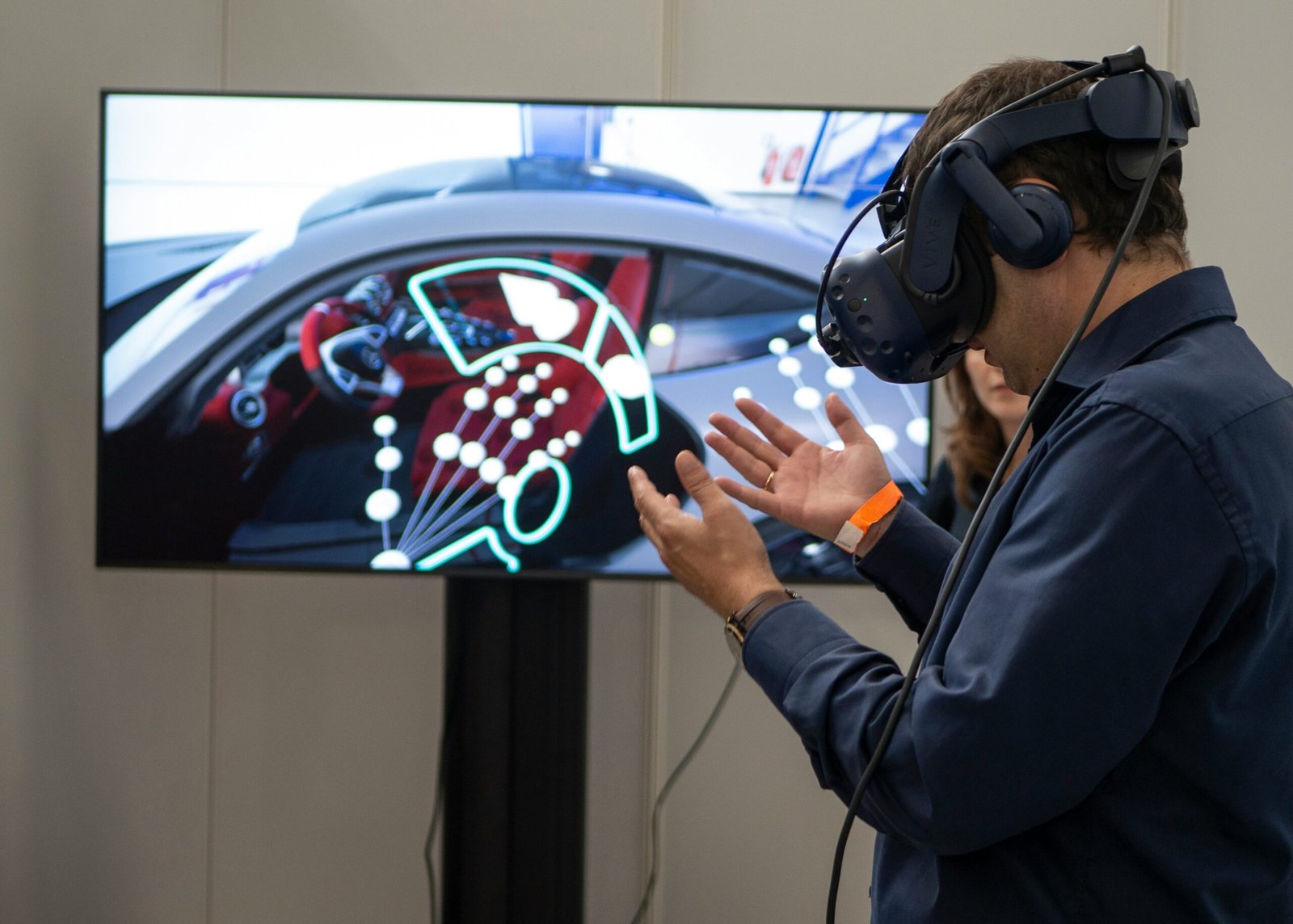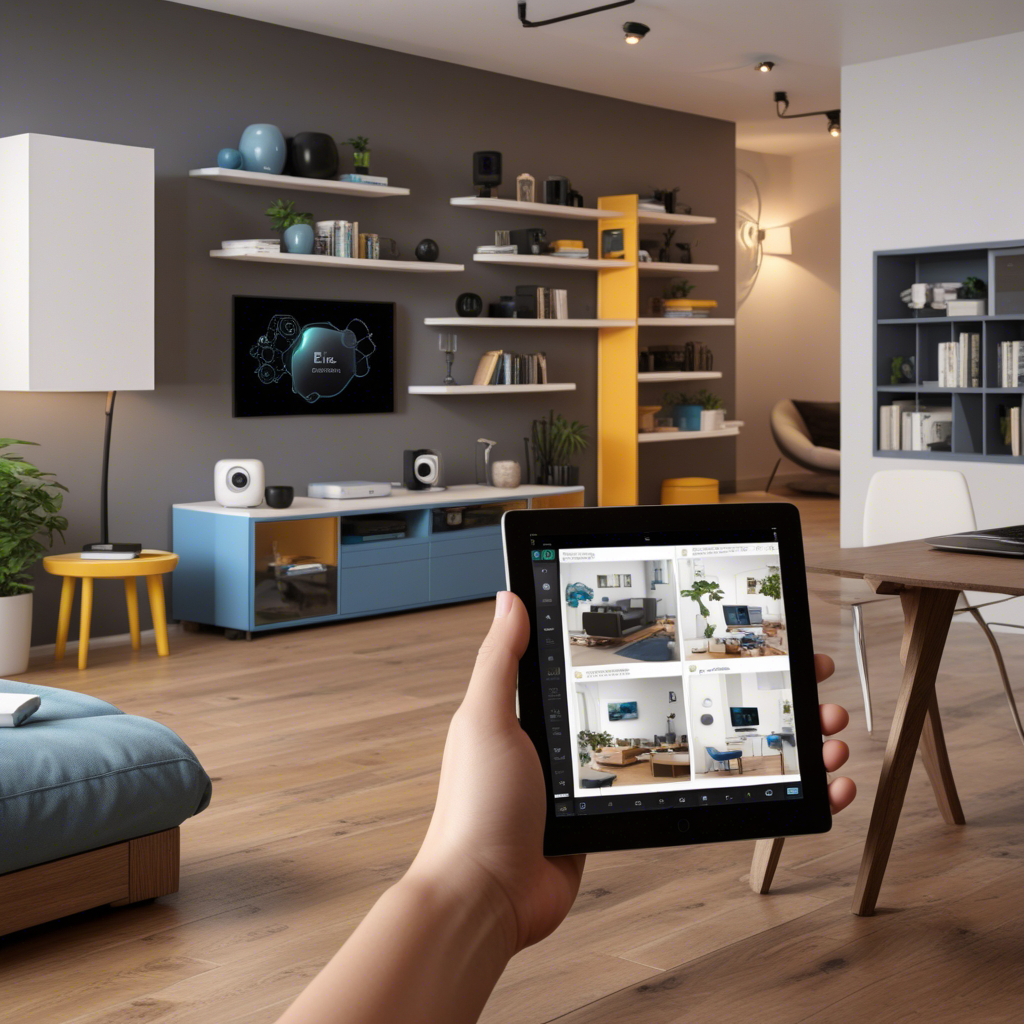Understanding Augmented Reality: An Overview
Augmented Reality (AR) is a technology that overlays digital information, such as images, sounds, and other sensory enhancements onto the real world. This integration creates an interactive experience that enhances a user’s perception of their environment. AR differs significantly from Virtual Reality (VR), which immerses users in a completely synthetic environment, severing connections with the actual world around them. Essentially, while VR virtualizes reality, AR augments it, allowing for a unique blend of the physical and digital worlds.
The technological foundations of AR consist of various hardware and software components that work in conjunction to produce a coherent experience. Hardware typically includes sensors, cameras, and displays, which are pivotal for capturing real-world views and presenting augmented content. Software components often involve complex algorithms that allow the digital elements to interact appropriately with the physical surroundings. These can include tracking systems to determine the device’s position, along with recognition systems that identify objects within the user’s environment.
The evolution of AR technology has been remarkable since its inception. Key milestones include the introduction of heads-up displays in aviation, which integrated basic augmented elements into pilot views, and the launch of mobile applications that popularized AR for consumers, such as Pokémon GO in 2016. Advancements in smartphone technology, notably camera and sensor capabilities, have significantly propelled AR’s accessibility. By 2023, AR has further advanced with the emergence of smart glasses and integrated AR systems in various sectors including healthcare, retail, and education, showcasing the extensive range of applications and the enduring impact of this transformative technology. As we look to the future, AR continues to evolve, promising innovative experiences and widespread deployment across numerous industries.
Recent Advancements in AR Technology
The realm of augmented reality (AR) technology has witnessed remarkable breakthroughs in both hardware and software domains over recent years. Leading this charge are several innovative devices that greatly enhance the immersive experience. For instance, AR glasses have seen significant improvements in form factor and functionality, enabling lighter designs with higher-resolution displays. Notably, companies such as Microsoft with their HoloLens and Google with their upcoming AR initiatives are redefining what these devices can achieve in both personal and professional environments.
In addition to hardware advancements, software innovations have also played a pivotal role in advancing the AR landscape. Development platforms have become more robust, allowing developers to create more complex and interactive applications with greater ease. For example, tools such as ARKit by Apple and ARCore by Google provide developers with advanced features and functionalities necessary for creating rich AR experiences. These platforms not only streamline the development process but also foster higher levels of creativity among developers, leading to a surge in applications that cater to various industries including education, healthcare, and entertainment.
Key players in the AR market, including Meta, Snap Inc., and Niantic, have embarked on significant projects aimed at enhancing user experience and accessibility. Collaborations among these companies and various research institutions have led to advancements in computer vision, which allows for more fluid interactions and tighter integration with the real world. The impact of these improvements ensures that augmented reality becomes more user-friendly and accessible to a broader audience, diminishing barriers and encouraging widespread adoption.
These advancements collectively contribute to an enriched usability experience for end-users, making augmented reality an integral part of daily life. As we move forward, the trajectory of AR technology suggests a promising future filled with even more innovative applications and a deeper integration into multiple facets of society.
Applications of Augmented Reality Across Industries
Augmented Reality (AR) technology is reshaping various sectors by providing innovative solutions and enhancing user experiences. Each industry harnesses AR to address specific challenges, improve processes, and engage customers more effectively. In the gaming industry, for instance, AR games like Pokémon GO illustrate how blending digital elements with physical surroundings can create immersive experiences, capturing significant user engagement and driving social interaction.
In healthcare, AR applications are revolutionizing medical training and surgical procedures. Surgeons utilize AR to overlay critical information directly onto their field of view, allowing for precision during operations. A notable example is the use of Microsoft’s HoloLens, which enables orthopedic surgeons to see 3D imaging of bones during surgery, significantly enhancing decision-making and reducing the risk of errors. Additionally, AR is employed in patient education, where it simplifies complex medical concepts, promoting better understanding and adherence to treatment plans.
The education sector is also leveraging AR to make learning more interactive and engaging. By integrating AR into textbooks or classroom settings, educators can provide students with interactive visuals, enabling them to explore complex subjects, such as the human anatomy or historical events, in a more meaningful way. This application has been successfully implemented in various institutions, resulting in improved retention rates and enthusiasm among students.
When it comes to architecture, AR tools allow professionals to visualize designs in real-time. Architects can use AR to overlay 3D models onto physical spaces, aiding clients in the decision-making process and fostering collaboration among stakeholders. Furthermore, in retail, brands are utilizing AR to enhance customer experiences. Applications such as virtual try-ons and AR showrooms enable consumers to visualize products in their environment, increasing engagement and potentially leading to higher conversion rates.
Despite the numerous advantages AR offers, challenges persist. High implementation costs, the need for specialized training, and potential privacy concerns are significant barriers that industries must navigate. As AR technology continues to evolve, addressing these limitations will be essential for maximizing its benefits across diverse sectors.
The Future of AR Technology: Trends and Predictions
The future trajectory of augmented reality (AR) technology promises to be dynamic and transformative as numerous advancements converge. Emerging trends suggest that the integration of artificial intelligence (AI), machine learning, and 5G connectivity will significantly enhance the capabilities and applications of AR. These technologies will enable more immersive and intuitive user experiences, allowing for real-time data processing and seamless interactions between the digital and physical worlds.
AI-driven algorithms will facilitate personalized AR experiences, where environments and information can be tailored to individual preferences and needs. For instance, retail applications may leverage AR to provide consumers with personalized shopping experiences, showcasing product styles and variations based on past purchases and browsing history. In addition, AI can enhance visual recognition systems, improving the accuracy of AR overlays on real-world objects and enabling developers to create innovative applications across various sectors.
Moreover, the rollout of 5G networks will further boost AR technology by ensuring high-speed, low-latency connections. This connectivity allows for complex data exchanges without significant delays, which is crucial for real-time interactions and applications, such as multiplayer gaming or remote collaboration in professional settings. As the technical barriers diminish, we can expect AR to infiltrate various industries from education to healthcare, where surgical simulations and training programs can be conducted using immersive AR environments.
As AR technology becomes more pervasive, societal implications will emerge. Ethical considerations surrounding privacy will occupy an important space, particularly regarding the data collected through AR applications. Users will need assurances that their personal information is secure while they navigate AR experiences. Additionally, the potential for AR to alter everyday life brings about the necessity for rules and regulations to prevent misuse. As we move forward, the balance between technological advancement and ethical responsibility will shape the AR landscape significantly.


